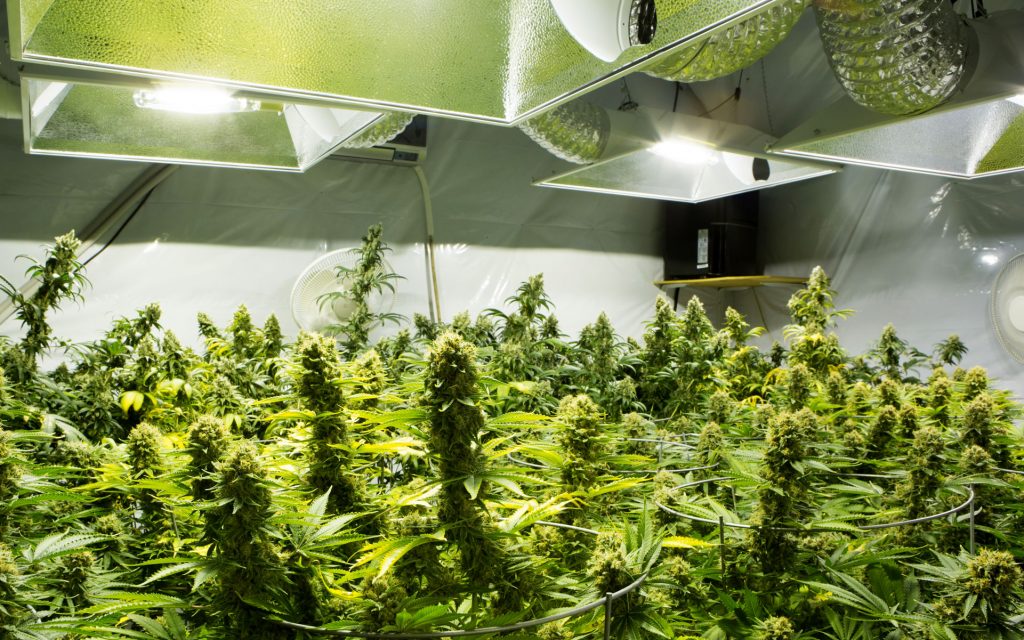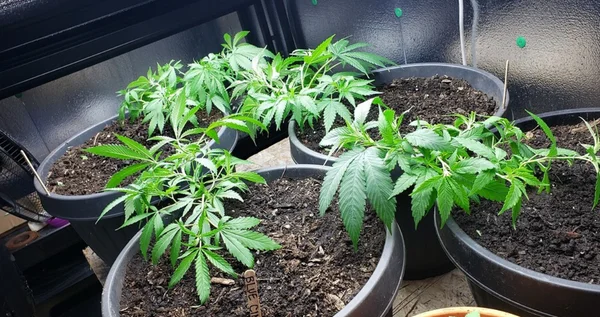How to grow marijuana indoors? Growing marijuana indoors is a fantastic way to cultivate high-quality cannabis all year round, offering complete control over your growing environment and the ability to fine-tune every detail to produce the best possible buds. Whether you’re limited by space, concerned about privacy, or simply want to experiment with different growing techniques, indoor cultivation provides a versatile and rewarding experience.
Benefits of Growing Marijuana Indoors
High-Quality Cannabis
Growing indoors allows you to control every aspect of your plant’s environment. From light and water to nutrients and air circulation, you can optimize conditions to produce potent, resinous buds. While indoor growing can be more resource-intensive and costly, the ability to tailor the growing environment can lead to superior quality cannabis.
Adaptability
Unlike outdoor cultivation, indoor growing isn’t tied to the sun and seasons. This flexibility means you can provide the ideal conditions for your plants at any time of year. You’ll manage the grow medium, water and nutrient intake, temperature, humidity, and more, creating a perfect habitat for your plants.
Multiple Harvests
Indoor growing allows you to control the growth cycle of your plants, enabling multiple harvests per year. By managing light schedules, you can induce flowering and harvest plants at your convenience, ensuring a continuous supply of cannabis regardless of the season.
Privacy and Security
Even in areas where cannabis cultivation is legal, privacy is often a concern. Growing indoors lets you keep your plants hidden from judgmental neighbors and potential thieves, ensuring your hobby remains discreet and secure.
Setting Up an Indoor Grow Room
Choosing Your Indoor Space
How to grow marijuana indoors with succes, then your growing space is critical to your success. A dedicated space such as a closet, tent, cabinet, spare room, or even a corner of your basement can work. It’s important to tailor your equipment to fit your space and start small to keep initial costs and mistakes manageable.

When designing your space, consider room for your plants, lights, fans, ducting, and other equipment, as well as space to work on the plants. Remember that cannabis plants can double in size during the flowering stage, so ensure adequate headroom.
Indoor Climate Control
Cannabis thrives in specific environmental conditions. You’ll need to monitor and regulate temperature, humidity, light intensity, and airflow. External climate conditions will affect your grow space, so choose a cool, dry area with access to fresh air.
If growing in a cold, wet basement, you might need a dehumidifier or heater. Conversely, a hot area might require extra fans or an AC unit. A useful trick is to run grow lights at night when it’s cooler and keep them off during the day.
Lighting Essentials
Light is crucial for cannabis growth. Plants need 18 hours of light per day during the vegetative stage and 12 hours per day during flowering. Different types of grow lights offer various advantages:
HID Lights
High-Intensity Discharge (HID) lights, including Metal Halide (MH) and High-Pressure Sodium (HPS), are industry standards due to their efficiency and output. MH lights are used during the vegetative stage, while HPS lights are used during flowering.
Fluorescent Grow Lights
Fluorescent lights, particularly T5 bulbs, are popular among small-scale growers. They are cheaper and don’t require cooling systems, though they are less efficient than HID lights.

LED Grow Lights
LED lights are more expensive but offer numerous benefits, including longevity, lower electricity usage, less heat production, and a fuller light spectrum, leading to better yields and quality.
Air Circulation
Proper airflow is essential for healthy plant growth. An exhaust fan near the top of the grow space will remove warm air, while a fan or port near the floor will bring in cool air. A complete air exchange should occur every minute to prevent CO2 depletion and maintain humidity levels.
Oscillating fans can strengthen plant stems and ensure even air distribution, preventing hot spots and humidity pockets that can lead to mold or pests.
Timers and Automation
Timers are crucial for managing light cycles, ensuring your plants receive consistent lighting. Thermostats can regulate fans, dehumidifiers, and AC units, maintaining ideal temperature and humidity levels. Advanced environmental controllers can automate these processes, providing peace of mind when you’re away from your garden.
Tip: Use your weed harvest to make tasty Edibles. Check out here the best edibiles in Amsterdam.
Regulating Temperature and Humidity
Temperature Control
Maintain temperatures between 70-85°F with lights on and 58-70°F with lights off. Different strains may prefer slightly different temperatures, so adjust accordingly. Use tools like thermometers, hygrometers, and infrared thermometers to monitor conditions.
Temperature Management Tips:
- Lights: Adjust light height and type to manage heat.
- Airflow: Use fans and ducting to move air.
- ACs and Heaters: Employ these devices to maintain stable temperatures.
Humidity Control
Optimal humidity levels vary with growth stages. Seedlings prefer around 70% humidity, vegetative plants 40-60%, and flowering plants 40-50%. Use dehumidifiers to lower humidity and fans for better air movement.
Conclusion
So how to grow marijuana indoors? Growing marijuana indoors offers unmatched control over your cultivation process, leading to high-quality cannabis and multiple harvests year-round. By carefully managing your grow space, climate, lighting, and airflow, you can create an optimal environment for your plants to thrive. Equip yourself with the right tools and knowledge, and enjoy the rewarding experience of indoor cannabis cultivation.